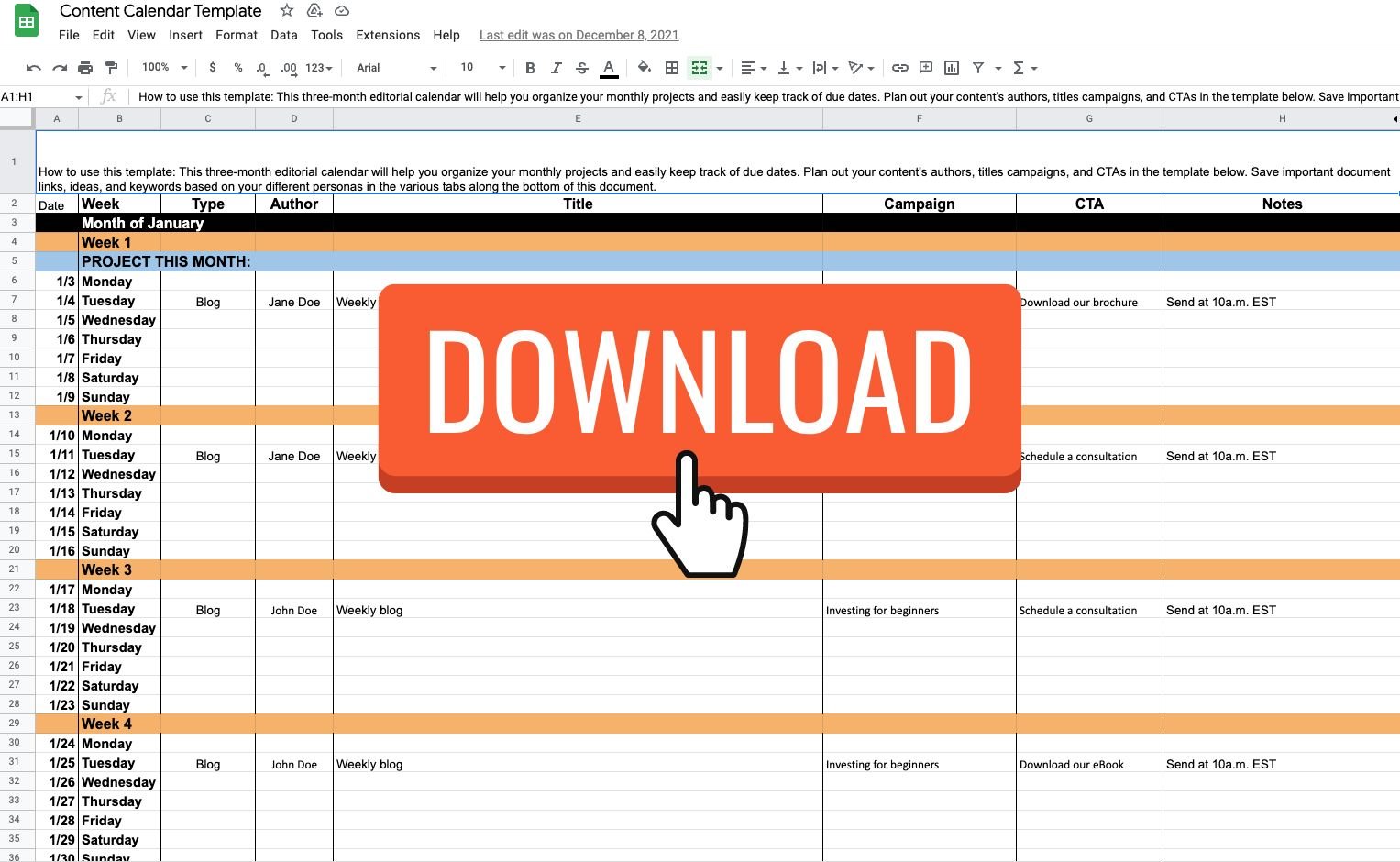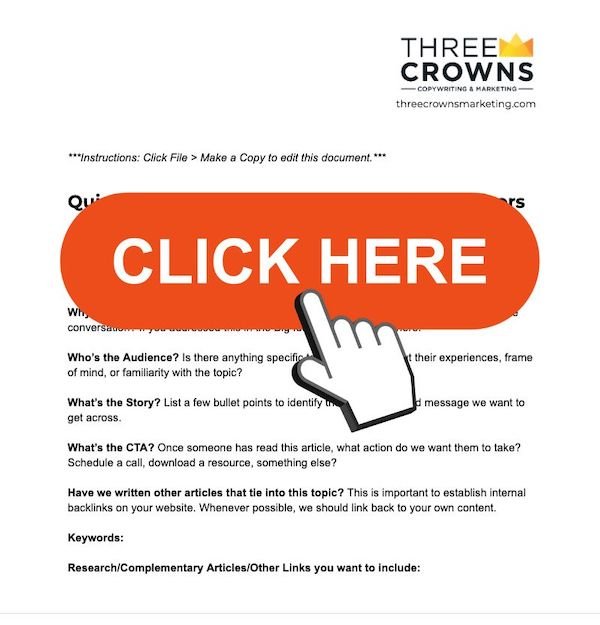The Financial Advisor’s Guide to Writing Blogs that Deliver Real Results
Justine Young
Senior Content Writer
Search
Subscribe
Writing is such a personal process. When I tell people that I’m a writer, I’m often met with phrases like, “I could never do that; I’m not creative” or “I’m not good at writing.”
Luckily, you don’t have to be a lifelong writer to produce a good blog – it’s more about creating a process you can replicate successfully. You don’t need to have a heroic backstory or a knack for metaphors to get the job done – anyone can write.
Newsletter Sign up
"*" indicates required fields
Blogging is an integral part of content marketing. It’s a way for advisors to educate clients, reach new prospects and show off their expertise. Done correctly, your blog can also help create a cohesive brand voice for your firm.
We often hear in our line of work that advisors have something to say, but they just don’t know how to get it down on paper. Sound familiar?
Luckily, we’ve got a few tips and tools of the trade to help you begin and sustain your firm’s blog. But first, let’s look at the “why.”

Why Blogging is Important for Your Content Marketing Plan
There are several benefits to blogging. Your firm can:
-
Educate your clients on financial solutions your firm offers
-
Attract prospects to your website
-
Increase the rankings of your website in search results
-
Create more brand awareness
-
Develop a strong brand voice
-
Use blogging as an idea generator
As you share your perspective on markets, financial planning and the larger world, you’ll find new ideas to explore regarding how you operate as an advisor.
How to Get Started Blogging
The very first step to blogging (and content marketing in general) is to set specific goals. Whether it’s gaining prospects or creating a stronger online presence, goals keep you on track and motivated as you move forward.
Once you’ve got your goals ready, it’s time to dive into your new blog.
Choose Topics
When you’re choosing topics for your blog, you need to keep two perspectives in mind – what you have to say and what your target audience wants to hear.
Make a list of topics you’re excited to write about, or anything you might have to add to the overall advising conversation. Don’t worry too much about making each idea a winner, you can always parse down the list later.
Next, think about questions your prospects and advisors often ask: What are they interested in? What topics do you find popping up again and again in those conversations?
Once you have both your lists complete, group some ideas together that have an overarching theme. For example, if you have a few ideas that fall under the umbrella of saving up for an emergency fund, that could make a great theme for your first few blogs. If you see several ideas about investing for retirement, you might choose that theme.

With a theme in place, your blog will have interconnected articles that build off of each other and offer more in-depth information. Brainstorm other ideas that connect with your target – would your clients or prospects want to learn more about this particular topic?
Create a Content Calendar – and Follow It
If you’re going to spend the time and money required to craft a blog, then you want to have a plan in place to ensure you’re optimizing your final product. Each blog you publish should be connected in some way to your firm’s overarching goals, message and buyer personas.

Lay out a timeline for each stage of your writing process: ideas, first drafts, revisions and final publication. Make sure to include who is responsible for each stage of the process as well. Set realistic goals for how often you’ll publish. Will you be able to churn out a new blog each week, or does a bi-monthly (or even monthly) publication goal better align with your schedule?
Related: 3 Important Parts of Building Your Advisory Firm’s Content Calendar
Most importantly: Stay on track with the content calendar as much as possible – it’s easy to push off a writing task, but remember that your readers are expecting consistent output.
You can still have some flexibility in your content creation – sometimes changes are necessary and unavoidable. But if you want to make the most of your blog, an editorial calendar is a must-have.
Write First, Edit Later
One of the biggest challenges in writing is to get out of the “editor” mindset – the one searching for any little errors in that last sentence you wrote. While editing is an important part of the writing process, save it for the end.
Instead, focus on getting the big ideas down on the page first. If you’re writing a blog called, “Six Money-Saving Tips for Homebuyers,” your first move is to come up with those six tips.
You can also make those words pretty later on – which takes us to the revision stage.

Revise, Revise, Revise
A great rule of thumb? Always have at least two sets of eyes on your blog (or any other content) before you hit publish. The review step helps prevent grammatical/spelling errors and other major marketing mishaps.
When you’ve been staring at the same article for a while, it can be easy to miss mistakes. Ask a colleague to look over your work and suggest revisions and leave comments on what they like or dislike about it. If you’re thin-skinned about your writing, this might be a little painful, but it’s worth it if you want to create a great final product.
Optimize Blogs for Keywords
Keyword (or keyphrase) research is the process of finding terms that your ideal personas are searching for on a regular basis, and then using those terms organically in your blogs. It’s all about asking the right questions: What do I offer my clients? What questions do they have that could lead them to my product or service?
Your prospects might be searching for terms like “investing” or “finances,” but those keywords don’t give you a whole lot of indication that the person is looking to hire a financial advisor – they could just be exploring the basics.
For example, instead of focusing on the broad topic of “investing” as your keyword, you might see more traction with a longer keyphrase like “investing for early retirement” or “investing with ESG funds.”

To help you in this step, we’ve created a free, downloadable worksheet for making your keyword list – along with several prompts to get your creative juices flowing.
There are several great tools that can help you flesh out your keyword list – check out this blog for some of our favorites, both free and paid.
Once you have a few keywords you want to target, place them where they make the most sense in your blog text and headers.

A call to action, or CTA, is your attempt to get your reader to take the next step: to subscribe to your email list, schedule a consultation or participate in a demo of your product/services.
You don’t want your blog to feel like one big sales pitch – it should be informative and useful to the reader. After you’ve presented your value, then you present the CTA, usually at the bottom of each blog. Don’t offer a buffet of CTA options; just choose one for your reader to focus on.
Also keep in mind that a call to action implies a sense of urgency. Use active verbs and first-person verbiage while avoiding long-winded sentences in your CTAs.
Want to see a real-life example? Keep reading ‘til you find the bottom of this blog!
Pick a Catchy Headline
The blog headline is designed to compel people to read the blog. You could pour hours of work into a blog, but with a lackluster headline, it could end up a total flop. Headlines also need to be accurate – your readers expect the headline to reflect the content they’re about to read.
While there are endless ways to approach writing headlines, there are four in particular that are favorites here at Three Crowns:

A few other tips to get you started on those headlines? Try to keep them under 70 characters – super long headlines can annoy search engines and readers. We also suggest you try writing at least three headlines to choose from. Let them sit for a bit, and then decide which one works best for that particular blog.
Add Images
Finally, you’re going to want to slap some imagery into that blog. Images break up large chunks of text and keep readers engaged.
While professionally designed, custom images are fantastic additions to any blog, you don’t have to have an in-house graphic designer to get the job done. There are several free stock image sites like Pexels or Unsplash that offer several options for your featured images.
Canva also offers free, simple photo editing software you can use to add logos or otherwise alter images to fit with your blog.

How to Create Content Faster
At some point in your blogging journey, you’re going to feel like you’ve hit a roadblock. Whether you’ve missed deadlines or fell into a creative slump, there are steps you can take to churn out more content quickly.
But by far, the best way to consistently create blogs on time is to use a starter template.
Free Blog Starter Template for Financial Advisors
We’ve created a free template to get you started on writing your blogs. The template begins with a few questions to get you in the right frame of mind for your outline. The second page of the template acts as a guide for plotting out the major points and sub-points of the blog.

You can download a copy of the blog starter template here.
There are a million things to say about blogging – but if you’re new to the game, it’s best to take things one step at a time until you find a decent rhythm. With these key steps in mind, you’re set to start creating and publishing your firm’s very own blog.
Or, if that all sounds like a lot to undertake on your own…
Find Support for Your Blog with Three Crowns
Here at Three Crowns, we believe that marketing is a collaborative process. Do you have big ideas for your firm’s blog, but not sure where to start? Click here to schedule a consultation with a member of the Three Crowns team today – we’d love to hear from you!
Newsletter Sign up
"*" indicates required fields